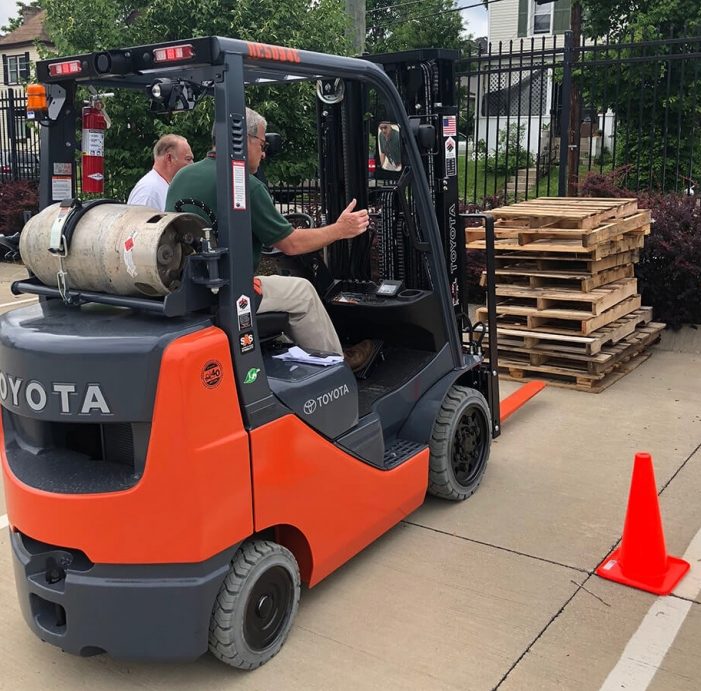5 Ways to Reduce the Risk of Forklift Accidents

B&B Attachment Blockmaster.
Forklifts are heavy industrial vehicles that often carry thousands of pounds elevated several feet in the air. So it’s not surprising that they are often involved in workplace accidents.
Yet most forklift accidents are 100 percent avoidable. All that’s required is a little caution, the proper training, and a culture of workplace safety. So here are five ways to get started improving forklift safety to reduce the risk of accidents in your workplace.
Slow Down
Probably the biggest cause of forklift accidents is drivers trying to do too much too quickly. When forklift operators are under pressure to complete tasks quickly to meet quotas, hit deadlines, or simply beat the clock so they can punch out, it’s often a recipe for disaster.
So the easiest way to decrease the risk of accidents is simply to slow down. For operators, that means reduced stress, better driving, and most importantly fewer accidents. For business owners, it could mean reassessing work conditions to alleviate “pressure points” that put stress on drivers.
Forklift Training
Another common cause of forklift accidents is drivers who don’t know what they are doing. Inexperienced drivers are more prone to accidents simply by virtue of the fact that they lack the knowledge and “feel” of driving a forklift safely.
Forklift training is mandatory for all workplaces that use lift trucks. But continual retraining can refresh knowledge and enhance the skills of even the most experienced driver.
Maintain Equipment
Forklifts that are broken, worn, or not in optimal condition are inherently more dangerous — especially when it comes to their power supply. Leaky LP tank connections, sulfur-caked battery connections, and sloppy gas refueling can create potentially explosive situations.
Minimize the risk of fires and other accidents by properly maintaining forklifts. Follow a maintenance schedule and make needed repairs quickly. Any forklift that has damage or wear should be taken out of service until it can be brought up to like-new condition.
Mandatory Inspections
Business owners, managers, and supervisors often don’t look at their forklifts every day. But drivers do.
Require operators to conduct pre- and post-shift inspections of their vehicles daily. While this task only takes a few minutes, it can reduce the risk of accidents, improve productivity, and most importantly save lives.
Forklift Safety First
Finally, a workplace that has a culture in which safety is prioritized can make everybody more aware of potential dangers and give them the willingness to do something or say something when they notice something is wrong.
Nurturing a safety culture can raise awareness at every level within an organization. The more employees are attuned to safety — from the CEO down to line level forklift drivers — the better off the business will be due to fewer accidents.

